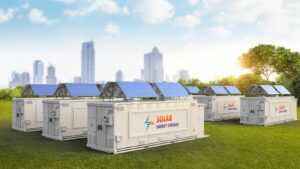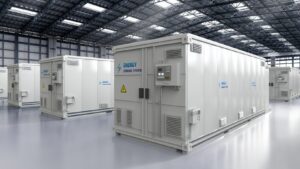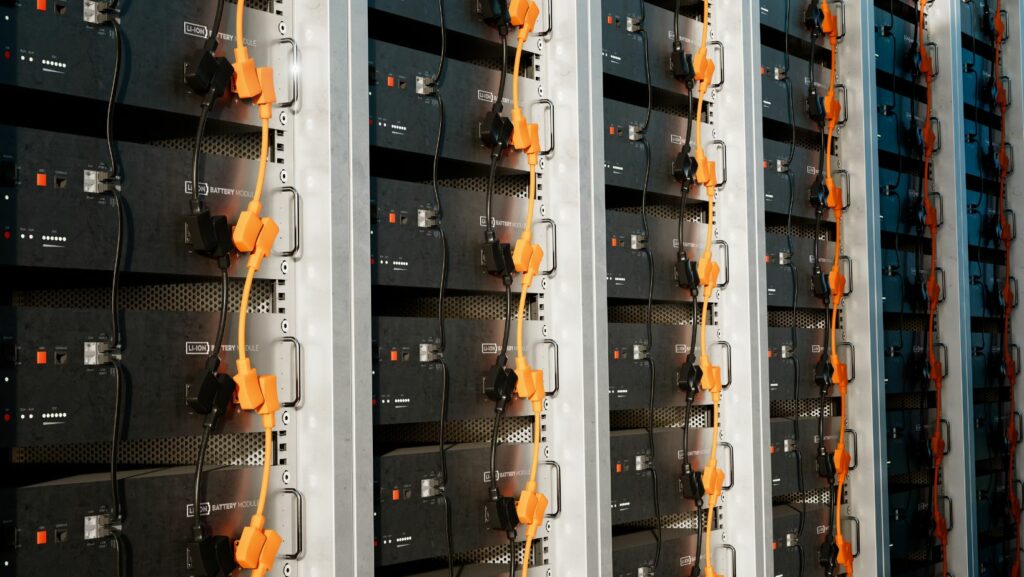In the dynamic world of energy, power storage solutions have emerged as game changers. They’re not just about storing electricity for a rainy day; they’re about optimizing energy use, reducing costs, and enhancing sustainability.
Power Storage Solutions

Power storage solutions encompass a variety of technologies, each chosen by energy providers for its unique capabilities. Used primarily in the form of lithium-ion batteries, flow batteries, and pumped hydro storage, these solutions have emerged as vital for energy optimization. Lithium-ion batteries, for instance, stand out for their high energy density, while flow batteries shine in terms of longevity. Pumped hydro storage, on the other hand, triumphs in the realm of large-scale energy storage.
Each solution has its unique trade-offs: pumped hydro storage offers scalability but necessitates sizable geographical space. In contrast, lithium-ion batteries and flow batteries provide portability and longevity but are more costly. Therefore, the selection of power storage solutions pivots on the specific use-case, capacity requirements, and financial feasibility. This array of power storage solutions, while diverse in nature, shares a common goal of fostering energy conservation and promoting renewable energy use.
These technologies drive forward the evolution of power storage solutions, mitigating the challenges associated with renewable energy sources’ intermittent nature. This allows for energy to be stored when supply exceeds demand, and released when the converse is true, facilitating a more resilient, sustainable, and efficient energy system.
Key Components of Power Storage Systems
Power storage systems hinge on four crucial components. Firstly, generators, imperative for electricity production. Common types include fossil fuel, solar, and wind generators. Secondly, energy convertors, pivotal in changing one energy form to another, for instance thermal energy into electrical energy. Thirdly, power storage units, the heart of the storage system, store energy for later use such as lithium-ion batteries, flow batteries, and pumped hydro storage.

Lastly, power inverters alongside converters, function to regulate and maintain the consistent flow of electricity. Collectively, these components contribute to a robust and efficient power storage system. They play integral roles in managing energy supply and demand, mitigating resource constraints, and bolstering the shift towards renewable energy. Different system configurations exist, stemming from the need to match technology capacities, space requirements, and budget constraints, with specific objectives and operational conditions.
Advances in Power Storage Solutions
Advancements in power storage solutions continuously revolutionize the energy sector. With lithium-ion batteries, technological progression relates to improved energy density. For instance, Panasonic’s “2170” cells, used in Tesla’s Model 3 and Model Y vehicles, pack 50% more energy than older models.
Flow batteries, on the other hand, have longevity enhancement as their defining advancement. An example is AdvanTec’s Advanced Battery Energy System (ABES) technology, offering a lifespan of ten years or more, a significant increase compared to previous versions.

Advancement in pumped hydro storage concentrates mainly on efficiency and large-scale storage capacity improvement. An exemplar is Genex Power’s improved Kidston renewable energy hub, offering a 250 MW/2,000 MWh capacity, showcase advancements in large-scale storage capacity.
Progress in power inverters and converters centers around energy efficiency and durability. ABB’s latest Terra High Power DC chargers represent significant improvements in this field, providing a 50 percent faster charge than their predecessors.
Challenges and Opportunities
Power storage solutions have emerged as a game-changer in the energy sector. They’re not just optimizing energy use and reducing costs but also driving the shift towards sustainability. Lithium-ion batteries, flow batteries, and pumped hydro storage are leading this transformation with their distinct advantages. The continuous advancements in these technologies, along with power inverters and converters, are enhancing energy efficiency and durability. However, it’s not without challenges. The need for improved energy density, longevity, and large-scale capacity is evident. Yet, these hurdles also present opportunities for innovation and growth. As the sector continues to evolve, so will the solutions. Stay tuned for future posts that delve deeper into these developments, showcasing the ongoing progress of power storage solutions in the energy sector.

